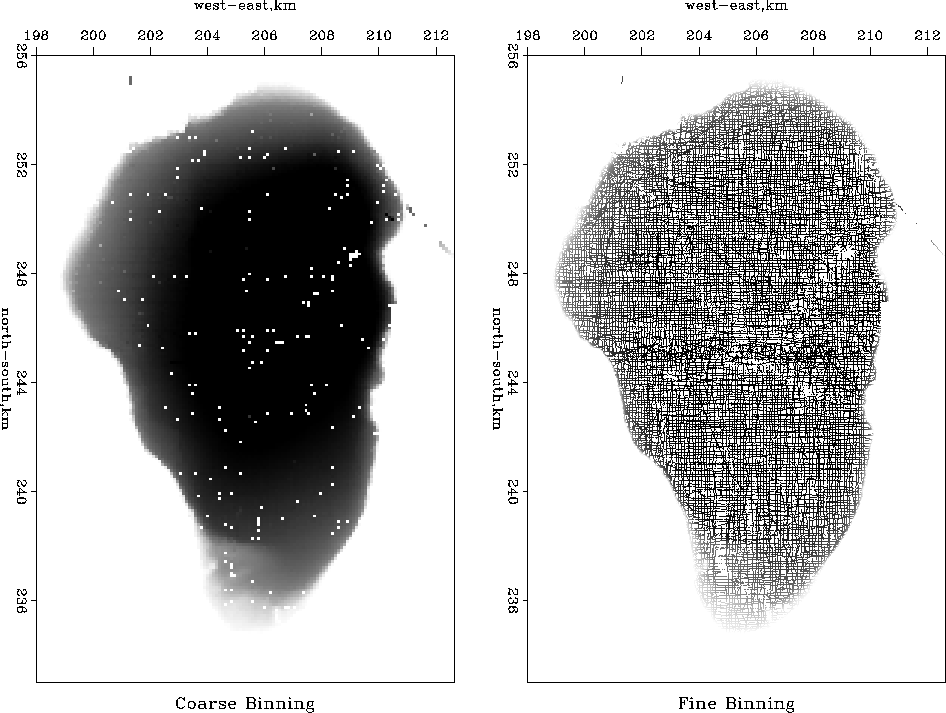




Next: Linear interpolation
Up: FAMILIAR OPERATORS
Previous: Nearest-neighbor coordinates
nearest neighbor binning
data-push binning
Binning is putting data values in bins.
Nearest-neighbor binning is an operator.
There is both a forward operator and its adjoint.
Normally the model consists of values given on a uniform mesh,
and the data consists of pairs of numbers (ordinates at coordinates)
sprinkled around in the continuum
(although sometimes the data is uniformly spaced and the model is not).
In both the forward and the adjoint operation,
each data coordinate is examined
and the nearest mesh point (the bin) is found.
For the forward operator,
the value of the bin is added to that of the data.
The adjoint is the reverse:
we add the value of the data to that of the bin.
Both are shown in two dimensions in module bin2.
bin2push data into bin
The most typical application requires an additional step, inversion.
In the inversion applications
each bin contains a different number of data values.
After the adjoint operation is performed,
the inverse operator divides the bin value
by the number of points in the bin.
It is this inversion operator that is generally called binning.
To find the number of data points in a bin,
we can simply apply the adjoint of bin2 to pseudo data of all ones.
To capture this idea in an equation,
let  denote the linear operator
in which the bin value is sprayed to the data values.
The inverse operation,
in which the data values in the bin are summed
and divided by the number in the bin, is represented by
denote the linear operator
in which the bin value is sprayed to the data values.
The inverse operation,
in which the data values in the bin are summed
and divided by the number in the bin, is represented by
|  |
(15) |
Empty bins, of course, leave us a problem.
That we'll address in chapter ![[*]](http://sepwww.stanford.edu/latex2html/cross_ref_motif.gif) .
In Figure
.
In Figure ![[*]](http://sepwww.stanford.edu/latex2html/cross_ref_motif.gif) , the empty bins contain zero values.
galbin90
, the empty bins contain zero values.
galbin90
Figure 3
Binned depths of the Sea of Galilee.










Next: Linear interpolation
Up: FAMILIAR OPERATORS
Previous: Nearest-neighbor coordinates
Stanford Exploration Project
4/27/2004
![]() denote the linear operator
in which the bin value is sprayed to the data values.
The inverse operation,
in which the data values in the bin are summed
and divided by the number in the bin, is represented by
denote the linear operator
in which the bin value is sprayed to the data values.
The inverse operation,
in which the data values in the bin are summed
and divided by the number in the bin, is represented by
![[*]](http://sepwww.stanford.edu/latex2html/cross_ref_motif.gif) .
In Figure
.
In Figure ![[*]](http://sepwww.stanford.edu/latex2html/cross_ref_motif.gif) , the empty bins contain zero values.
, the empty bins contain zero values.
